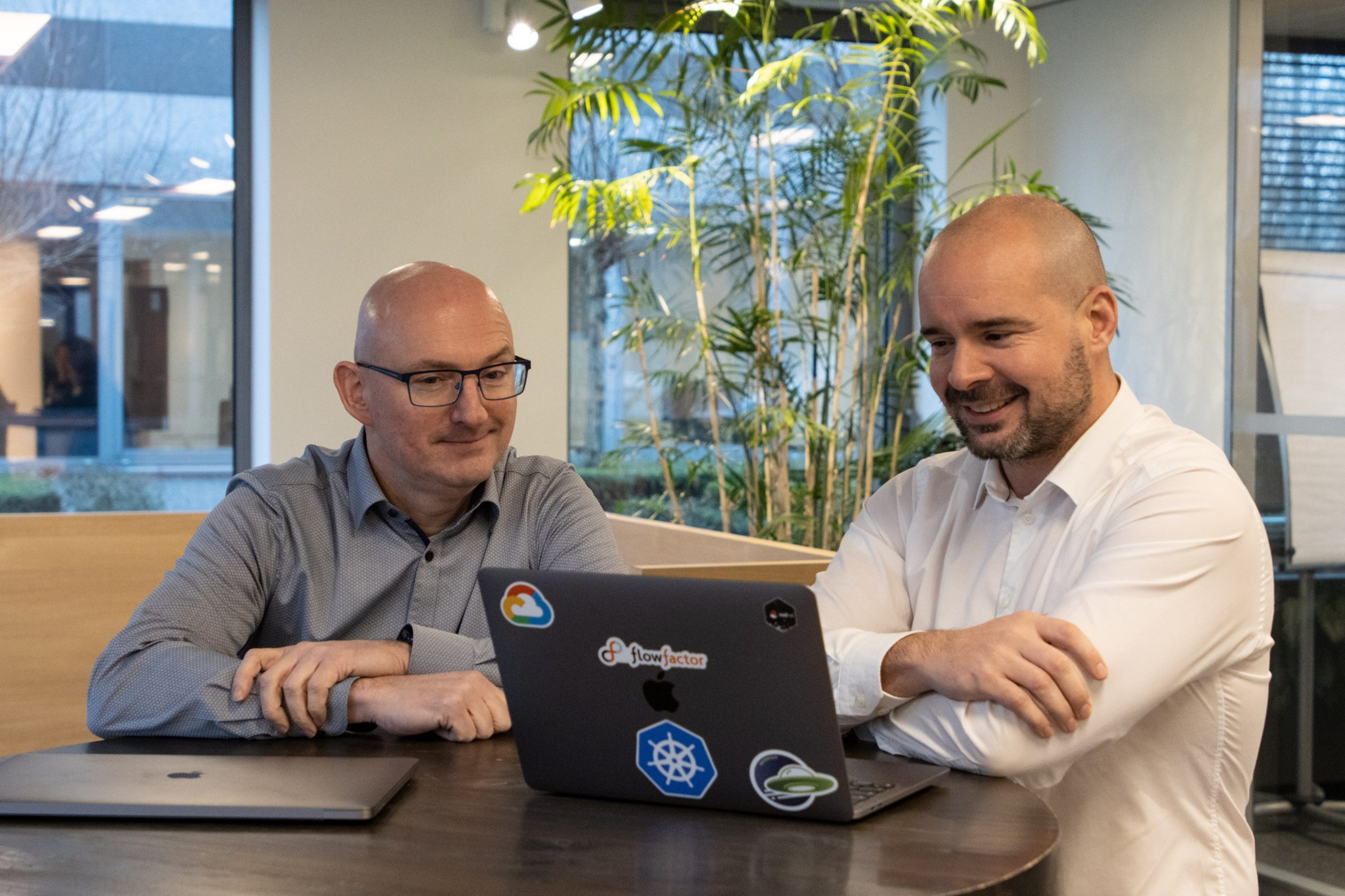
Shift Left Done Right: A Balanced Approach to Developer Responsibility
Shift Left Done Right: A Balanced Approach to Developer Responsibility
20 April 2023
Kilian Niemegeerts

As software development continues to become a more integral part of modern business operations, companies are increasingly looking to shift more responsibility onto developers. This trend, known as “shift left,” aims to improve the efficiency of software development by having developers take on tasks traditionally assigned to other teams, such as testing and deployment.
However, while the shift left trend has its benefits, it’s important for companies to find the right balance of responsibility for their developers. At FlowFactor, we believe that developer self-service is key to successful shift left, but it must be implemented in a thoughtful and strategic manner. To better understand how companies can achieve this balance, we spoke with Kilian Niemegeerts, FlowFactor co-founder and DevOps expert.
Providing handles: Empowering developers without overloading them
Empowering developers without overloading them is a key principle of the shift left approach, according to Kilian Niemegeerts. He believes that companies should provide developers with the handles they need to manage their own workloads, but not dump all the responsibility on one person. This means giving developers the tools and resources they need to manage their own code quality, testing, and deployment, while still ensuring that key processes and standards are maintained.
“Developers don’t want to wait for operations to set up environments, or for security to sign off on a release,” says Kilian. “They want to be able to move fast and get things done. But they also need to be able to do so without compromising on quality or stability.”
It’s important to remember that these handles should not be seen as a replacement for specialized teams. Developers should still have access to support when needed and should work closely with operations, security & testing teams to ensure the stability and security of production environments.
Automation is key
As mentioned in the previous section, the key to shifting left is to enable developer autonomy without overloading them with too much responsibility. A big part of that solution is to introduce automation where possible. By automating repetitive tasks such as testing, deployment, and infrastructure provisioning, companies can increase the speed and efficiency of their software development processes while freeing up developers to focus on more critical tasks.
Kilian emphasizes the importance of automation in empowering developers and speeding up software development processes. “Developers don’t like waiting,” he says. “Automation is necessary to provide developers with the necessary tools to take control of their code and make changes quickly and efficiently.”
However, it’s important to note that automation should be implemented strategically and not viewed as a replacement for human oversight. While automation can reduce errors and improve the overall quality of code, experts in areas such as operations, testing, and security are responsible for maintaining and updating the automated tools. These experts play a critical role in ensuring that the automation is reliable, up-to-date, and aligned with the organization’s goals and priorities.
Measure Success
When it comes to measuring the success of a shift left approach, it’s important to take a holistic view that encompasses the entire organization, according to Kilian. He emphasizes that separate KPIs for development, operations, and security can often lead to conflicts and competing priorities, which can ultimately undermine the success of the shift left approach.
Kilian: “In an ideal world, developers would love to push everything instantly to production, while operations would prefer to never deploy at all. But the reality is that businesses need to find a balance between the two”
“Instead of focusing on individual KPIs, businesses should strive for company-wide metrics that align with their overall goals and objectives,” says Kilian. By focusing on shared metrics that reflect the organization’s broader objectives, teams can work collaboratively towards common goals, rather than competing against each other for individual success.
For example, rather than measuring the success of the shift left approach solely on the speed of development or the number of successful deployments, businesses could also consider metrics such as customer satisfaction, revenue growth, and time to market. By incorporating these broader metrics, businesses can ensure that the shift left approach is delivering real value to the organization as a whole, rather than just to individual teams.
It’s a Journey
Kilian notes that it’s important for companies to approach shift left with a realistic mindset, and understand that there may be some bumps along the way.
“It’s important to understand that this is a journey,” he says. “It takes time to build the culture and processes needed for a successful shift left. But by starting with small changes and gradually increasing developer responsibility, companies can achieve a more efficient and agile software development process.”
At FlowFactor, we understand that implementing a shift left approach can be a daunting task for many businesses. That’s why we offer our expertise as DevOps specialists to help guide companies through the process.
“Having a specialist or evangelist to get everyone on board can be immensely helpful,” Kilian explains. “By working closely with teams and providing guidance on best practices, we can help companies navigate the challenges of shift left and build a culture of developer self-service that empowers their teams.”
So, if you’re looking to implement a shift left approach in your business, don’t hesitate to reach out to FlowFactor. We’re here to help you every step of the way, from building the right processes and tools to fostering collaboration across teams. Contact us today to learn more.

Sorry, the comment form is closed at this time.